Light henna drawings
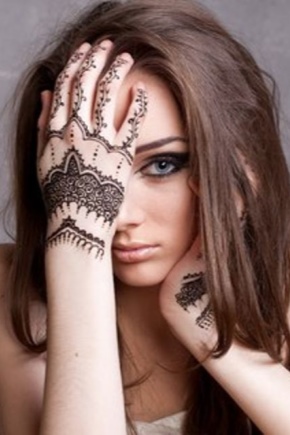
One of the distinguishing features of modern life is the erasure of boundaries between peoples and their cultures, the creation of a single interethnic space. In the context of the desire of people of different nationalities to unite, mehendi occupies a special place.
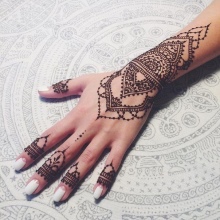

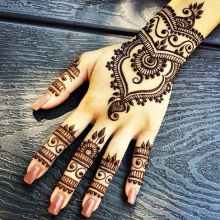
What is mehendi?
Mehendi (biotatu) is a special type of body decoration by applying individual drawings and intricate patterns to the skin using henna. This tradition has its roots in ancient times, when almost everyone tried to draw symbolic figures on the skin, striving for self-expression. The East is considered to be the birthplace of mehendi, where the art of mehendi was addressed in connection with various rituals. For example, in India, henna designs were traditionally used by brides during preparations for the wedding, and in Egypt they served as an obligatory decoration for dancers. Like many centuries ago, today the youth's passion for mehendi is associated with the desire to find the most effective way of communication and self-affirmation. The magic of underwear is that it allows a person to tell about his uniqueness in an original way and at the same time, it is understandable for others.
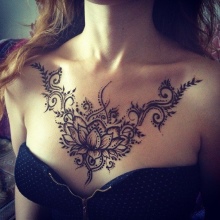
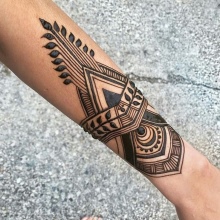
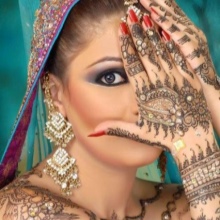
Varieties of styles
Biotatu can be done in different styles. Today, styles such as Arabic, Asian, African, Indian and Slavic are world famous. The Arab style is based on floral images of varying degrees of complexity, the interweaving of which creates a kind of encoded semantic picture. Asian mehendi, based on traditional Indian stories, glorifies the depth and sublimity of national values. The African style is distinguished by a clear structured mehendi theme, which finds a specific expression in each of its subspecies - Berber and Moroccan. The intricate patterns of African mehendi combine geometric shapes with the world of flowers.
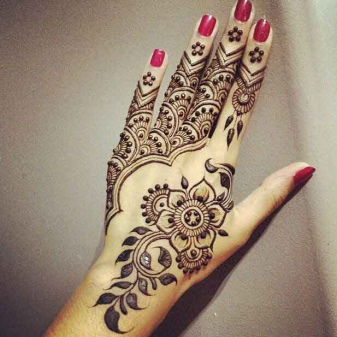
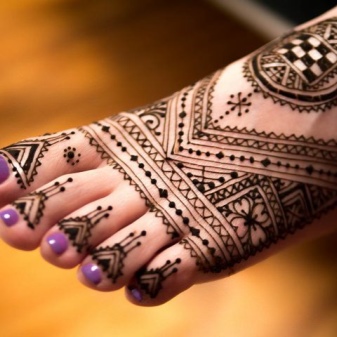
Indian henna painting as the main symbolic signs uses a variety of drop-shaped patterns with religious elements, the smallest flowers, which are connected by lines in a complex pattern pattern. The Slavic style of mehendi attracts attention with its eclecticism, unusual for other styles: in it, folklore motifs typical of the Slavic peoples are closely intertwined with the oriental symbolism of henna drawings, rethought in accordance with Slavic traditions.

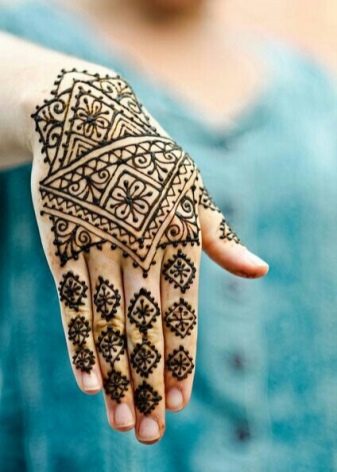
Benefits of Henna Painting
Compared to standard tattoos, mehendi has a number of advantages. Yes, they are:
- are absolutely natural and harmless;
- if necessary, easily removed;
- allow you to change the pattern in accordance with fashion trends;
- protect the skin from sunburn;
- contribute to the cooling of the body in conditions of tropical heat;
- bring good luck, fame, happiness in love;
- attract unusual style solutions.
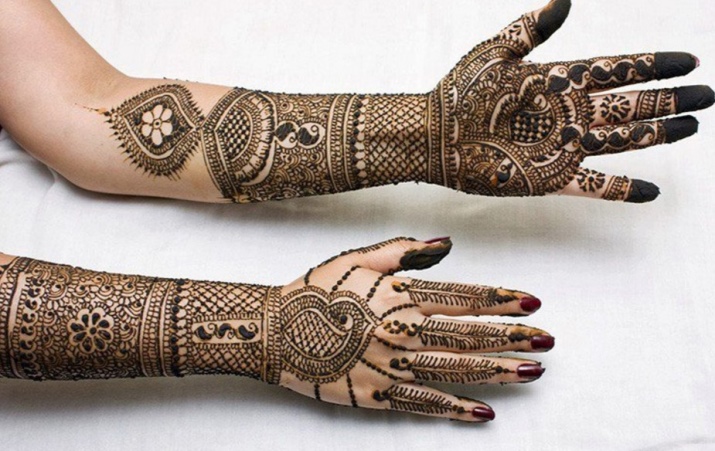
In addition, if you apply mehendi on your own, you involuntarily develop the makings of an artist in yourself, enter into a creative dialogue with your body and with the outside world.
The meaning of the drawings on different areas of the body
Before you apply the first henna tattoo on a particular part of the body, you should carefully study the semantic fullness of the drawings related to a particular style. Beginners are usually advised to use large-scale schemes filled with bright, crisp colors intertwined with a set of geometric shapes. The degree of complexity of mehendi patterns depends on the number of elements used in them, their heterogeneity, the variability of the connecting components of the pattern, the depth of the transmitted meaning.. The most accessible places on the body for applying mehendi are the palm, forearm, wrist and hand. They are suitable for floral ornaments made in Indian style. Miniature drawings on a variety of floral themes can often be seen on the fingers.
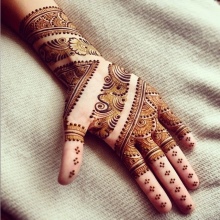
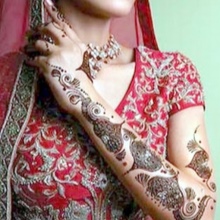
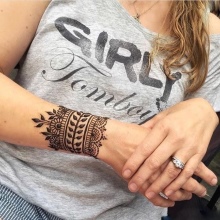
Today, henna bio-tattoo on the neck is considered fashionable, which emphasizes the elegance and sexuality of a woman. Among the most popular designs applied to the neck are inscriptions that have a certain personally colored meaning. Among lovers of mehendi in the neck area, a barcode has acquired a truly trendy status. The picture is a vertically arranged stripes, applied in accordance with a certain pattern, in which a certain meaning is encrypted. Mehendi in the form of a crown, depicted on a woman's neck, can symbolize her high position in society, career achievements, leadership qualities, lust for power and strong character.The image of a swallow on the neck is chosen by those girls who strive for a brighter future, appreciate devotion, believe in beauty and good luck. Trendy now is the tattoo of the zodiac sign located in the neck area. He is credited with magical properties - the protection of his owner throughout his life path. Images of henna on the neck of a woman of one of the representatives of the feline class - a tiger, a panther, a jaguar or a cat - are designed to warn others about her hidden deceit, prudence and rigidity.

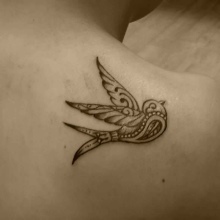

Many women believe that the most beautiful mehendi is a variety of images of an elegant fluttering butterfly. Such a pattern can decorate both the chest, and the wrist, and the ankle. The choice of a certain place for it on a woman's body depends much more on the degree of her emancipation than on any individual interpretations of the symbolic associations associated with a butterfly. Original henna drawings are often done on the legs. The most popular pattern today is the image of a dragon, which wraps around the leg or occupies a small part of it. This mehendi is endowed with different meanings, in particular, the ability to protect the owner, protect him from the vicissitudes of fate, or endow him with supernatural power.
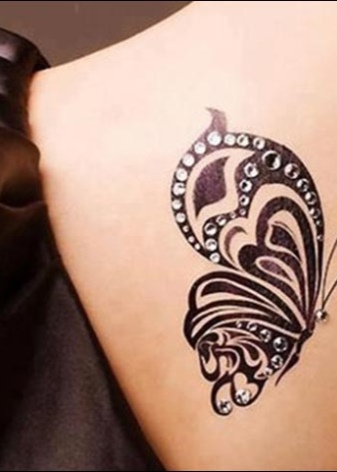
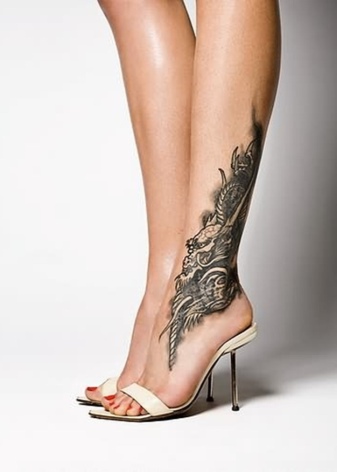
A pattern of poppies, lilies and roses is also often placed on the legs. Each flower has its own symbolic meaning. So, a rose with thorns is a symbol of martyrdom and sacrifice. Women who do not hide their inherent eroticism are fond of drawings in the form of bows and bandages on their legs, therefore such mehendi are more connected with the worlds of feelings, and not with religion and philosophy.
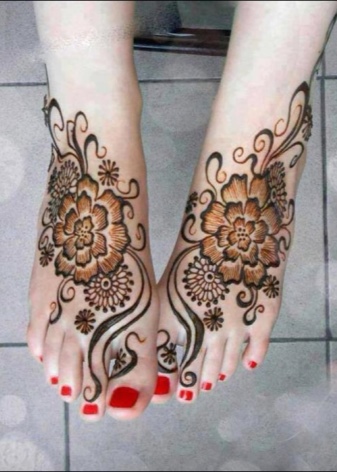
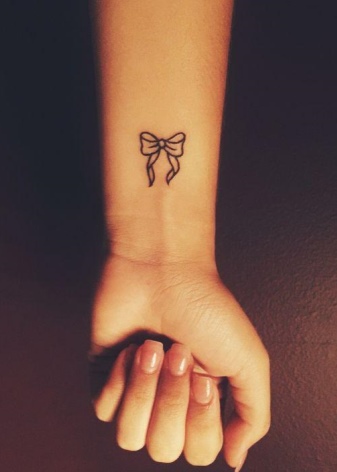
Types and symbolism of patterns
Depending on the ornaments applied by henna to the body, mehendi can be divided into several types:
- floristic;
- animalistic;
- graphic;
- combined.
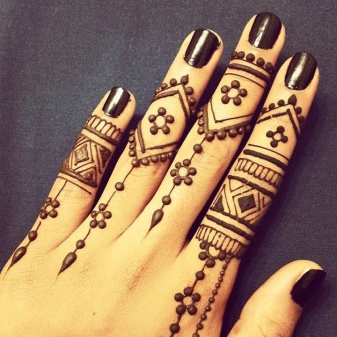

Each type of pattern has its own symbolic function. If, for example, you see your task as broadcasting to the outside world that you live in joy, and your heart sings with happiness, then mehendi from a flowering plant and fruits will suit you. A special reverence for fans of Indian-style henna drawings is the image of a peacock, which, according to mythology, personifies the infinity of space and life. Usually it is made the center of an intricate ornament that gives the bird a mysterious significance. It should be noted that for mehendi the bird is a typical symbol, it acts as a sign of good news, good deed, personal freedom. Therefore, not only the peacock is used in the symbolism of the tattoo. It also contains images of other birds, such as swallows, parrots, pheasants, and owls.
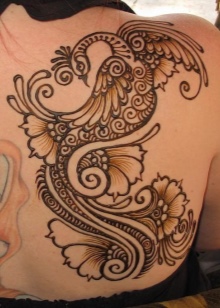

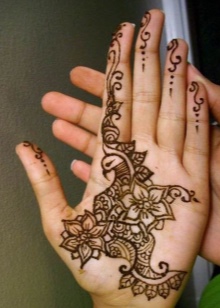
Often, not a holistic image of a particular bird is used, but its part - only wings. Such a fragmentary picture carries a double semantic load. On the one hand, such a mehendi communicates the enduring value of purity, closeness to God. On the other hand, the pattern affirms the priority of freedom over various norms and restrictions. The combination of sketches of wings and a heart is always perceived as a symbol of an unrealistically happy fate, and the presence of a crack in such a mehendi indicates disappointment or severe suffering of its owner associated with the loss of people close to him. Often, the "Dreamcatcher" is depicted on the legs - a drawing symbolizing protection from unpleasant thoughts. It is believed that this pattern protects a person's sleep, clears his thoughts in a dream.
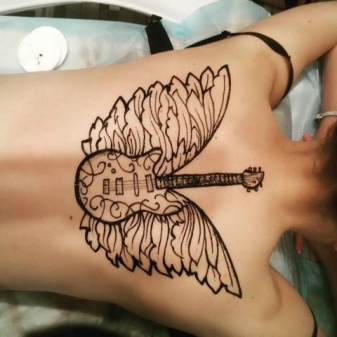

Necessary materials
Ready-made kits for mehendi are sold in the store.But if you like to experiment, try making your own pattern paste. The most necessary material for mehendi is, of course, henna. On sale there are different types of dye, referred to by the place of its production: Pakistani, Indian, Iranian henna and others. If you want to give the picture a darker shade, you should add basma to the paste. Next, you need thick paper. You need to cut a triangle, roll a cone out of it. It is with this “tool” that you will draw mehendi. Henna paste is placed inside the cone. A paper cone can be replaced with a syringe or a wooden spatula.
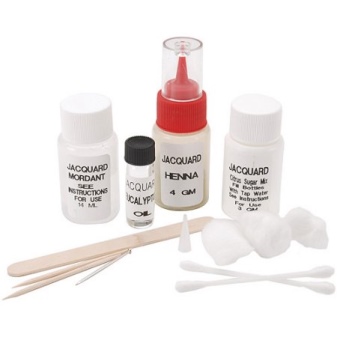

If you are a professional artist and know the technique of applying henna drawings to the body, use a brush instead of a cone. Its advantage is that the natural hair from which it is made penetrates better into the pores of the skin, and the pattern will look more spectacular and last longer. If you are a beginner, at first you will need stencils of the drawings you like. If you draw well, but have never applied henna patterns before, use a cosmetic pencil to pre-draw the pattern. You may need additional materials:
- sugar;
- water;
- cotton pads;
- food film (polyethylene).
If you want the drawing to dry faster, do not forget about the hair dryer.
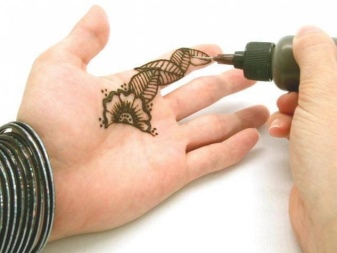
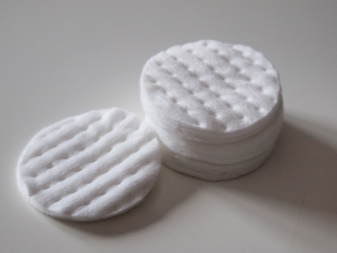
Types and recipes of pasta
Depending on what kind of henna is used in the preparation process, pastes are divided into ready-made compositions and pastes with natural henna. Ready-made paste is more suitable for those who draw professionally and master the mehendi technique. In this case, the advantages of ready-made formulations are that they:
- provide a quick manifestation of the pattern on the body - immediately after its application;
- allow you to create a pattern that is equally bright on different parts of the skin;
- save your time.
However, ready-made pastes are not without drawbacks, in particular:
- after drawing, the drawing cannot be corrected;
- patterns remain on the skin for no more than 7 days.

It is more convenient for beginners to work with natural pasta. It is easy to prepare it at home. The advantages of self-prepared composition is that:
- the pattern will appear after a few hours, and the details of the pattern can be changed if you are not very happy with them;
- the drawing will stay on the body for more than 20 days;
- homemade pastas are cheaper.
The only drawback of natural henna paste is that the pattern will be uneven in intensity on smooth and keratinized areas of the skin. In the latter case (on the palms and feet), the color will be brighter. In order for the pattern to be applied easily and last longer, the quality of the source materials must be high. Henna for hair coloring, which is sold in stores, is not always suitable for mehendi. The fact is that the powder must be very fine. You can get out of the situation in one simple way - grind henna in a coffee grinder so that it looks like fine dust.
There are several recipes for making pasta at home, the shelf life of which varies depending on the incoming components.
- Tea Based Recipe
This composition can be kept in the refrigerator for 2 days. It includes:
- half a cup of strong freshly brewed tea;
- juice of half a lemon;
- 6 tsp Sahara;
- 8 tsp henna.
In a ceramic bowl, mix tea leaves and lemon juice. Add sugar, henna, mix well until smooth. After 20 minutes, the pasta is ready.
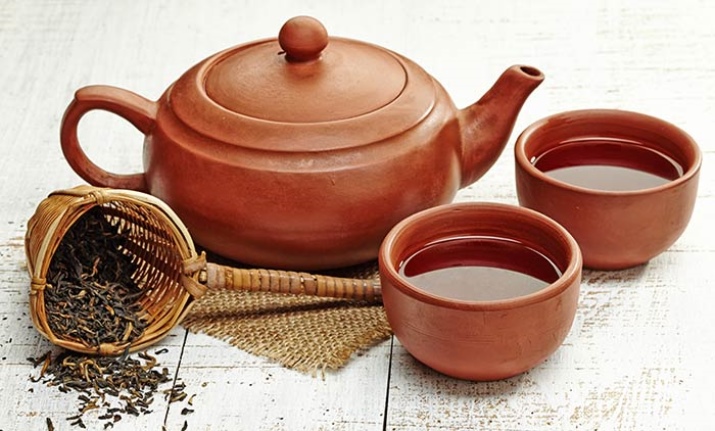
- Coffee Based Recipe
To prepare this pasta you need to take:
- instant coffee (5 tsp);
- warm water (1 tbsp.);
- 2 regular packs of henna;
- eucalyptus oil (5 drops);
- clove oil (5 drops).
We put the coffee dissolved in water on the fire and evaporate by a third. Add henna, oils. The paste should be infused for 2-3 hours and used immediately after this time has elapsed.
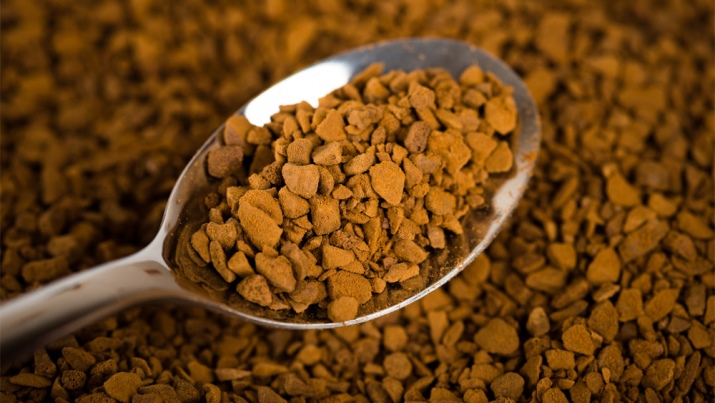
- Recipe based on chifir
In half a glass of chifir (strong thick tea) add:
- 2 regular packs of henna;
- juice of half a lemon;
- any vegetable oil (2 drops).
The mixture must be thoroughly mixed without leaving lumps. The paste is infused for 5 hours. This amount of paste should be enough for 2-3 drawings.
How to prepare the skin?
Before applying mehendi, the skin must be prepared: wash with warm water and soap, clean with a scrub. This procedure will help remove dead cells of the epidermis, and the pattern will hold better. Oil should not be applied to the skin, as it clogs the pores and prevents the henna from penetrating the skin. The oil is used exclusively after washing off the henna.
Immediately before painting, the skin should be steamed - take a hot shower, hold your hand or foot in hot water. Drink hot tea while applying the mehendi to keep your skin warm. Although henna does not irritate the skin, apply a small amount of paste to the crook of your elbow and leave it on for 3-4 minutes. If, after washing off the paste, redness does not appear, you can safely proceed to painting.

Painting technique at home
After you have chosen a pattern and prepared the skin, evaluate your strengths. For professionals, only the surface of the skin will be a limitation. For beginners, patterning can be tricky. If you are making mehendi for the first time, use stencils.You can buy them or cut them yourself from your favorite drawing or photo. The pattern is applied to any part of the body, but for the first time it makes sense to decorate the left palm. Presented in stages, the technique of applying henna patterns is as follows:
- Outline the left palm on thin paper and cut out the base of the stencil.
- Apply a pattern on it and carefully cut its contours with nail scissors.
- Warm the cone with the coloring paste by holding it in your hands for several minutes.
- Attach the cut out stencil to the cleaned skin, secure it with tape.
- Apply the paste with a layer of at least 2 mm and cover with polyethylene or cling film so that the coloring pigments are better absorbed into the skin.
- The paste should be kept for 3-4 hours.
- If you want to speed up the process, hold this "compress" in the sun or dry it with a hair dryer.
- Carefully remove the dried paste with a napkin soaked in sunflower oil.
- After removing the henna, lubricate the drawing with cosmetic (or ordinary vegetable) oil.
- It is advisable not to wet the area of \u200b\u200bthe skin decorated with a pattern with water during the day.
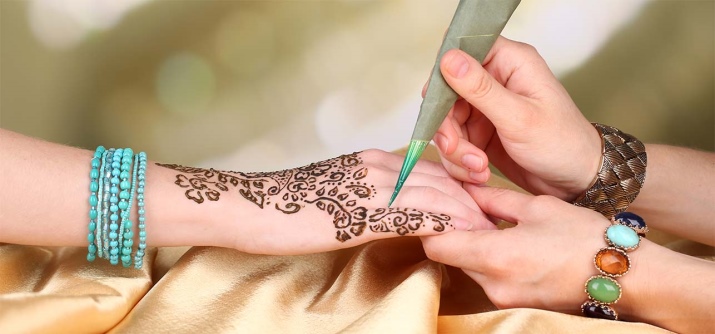
The color of the pattern immediately after application will be light orange. After a few days, the pattern will darken and become dark brown. If you want the pattern to last longer and not lose brightness, follow these rules:
- before washing the area of \u200b\u200bthe skin decorated with mehendi, lubricate the pattern with oil;
- do not abuse soap, do not rub the skin with a towel;
- postpone visiting the sauna or swimming pool;
- do not exfoliate at this time.

Popular sketches for beginners
The complexity of the pattern is determined by the number and combination of elements that form the pattern. The most sophisticated mehendi organically fit the features of the body - curves, moles.Wearing rings, watches, beads can also be played up. Starting to master the art of underwear painting, take on small drawings that include simple geometric shapes - lines, circles, dots. Small floral designs, typical of the Arabic style, are also suitable for people mastering the basics of henna drawing.
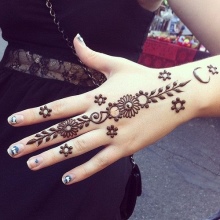


When you have learned how to draw an ornament from geometric and floral elements, you will be able to create compositions in the African style. Very simple traditional figures form a graceful lace pattern in the Indian or Slavic style. For beginners, there is only one recommendation - take on a feasible task, because your body is not a field for experimentation. No matter how safe henna is, you will be reducing unsuccessful drawings for quite a long time. Disappointment after the first experience can be an obstacle to your further development as a designer of yourself.

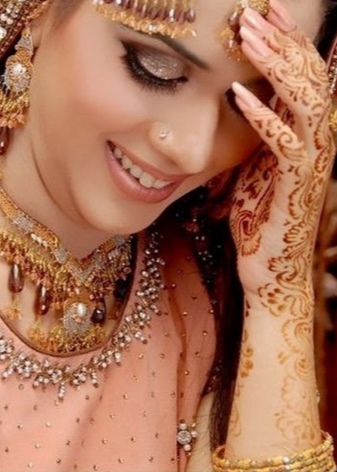
Mehendi, being one of the most ancient cosmetic procedures, does not lose its popularity today. Traditional patterns are filled with new meaning, the drawing technique is being improved. Moreover, this art turned out to be an organic part of the modern trend in the fashion world - the desire for naturalness and environmental friendliness. Indeed, natural dyes not only provide an excellent result in terms of decoration, but also benefit the skin. The procedure for applying the pattern is absolutely painless, and its result is able to amaze with its originality and sophistication.
How to make a drawing on the skin at home, see the following video.




























